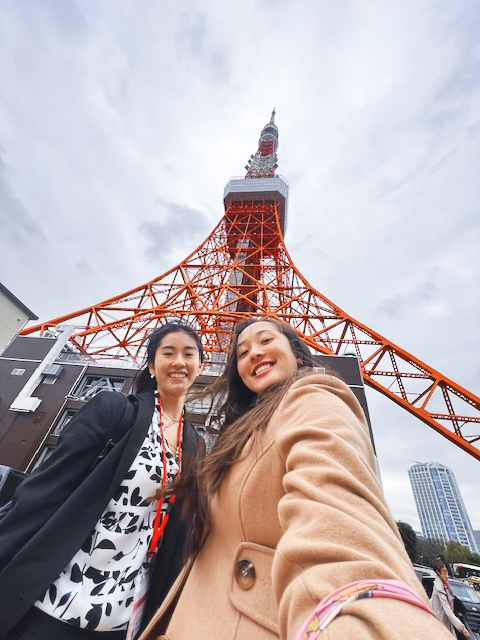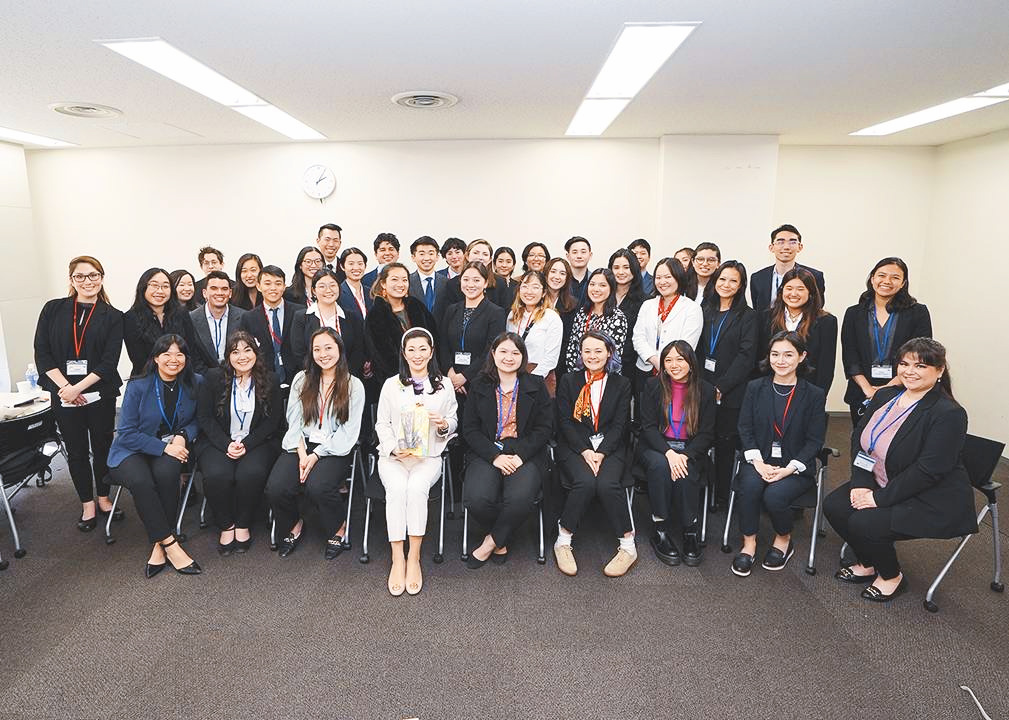
Megumi Thurston
Megumi Thurston was one of 37 participants who traveled to Japan in late March as part of the KAKEHASHI Project, co-sponsored by JACL and the Japanese Ministry of Foreign Affairs and the Japanese International Cooperation Center. For more information on the program, visit jacl.org/kakehashi. Following is her recollection of her trip experience.
“And” is one of the shortest words in the English language but has the immense job of “connecting words of the same part of speech, clauses or sentences that are to be taken jointly.” This word is used to unify, combine and has the power to connect two seemingly opposite things. This is exactly how I would describe my Kakehashi Program experience. (Read related story, “JACL Celebrates Return of the Kakehashi Project,” here.)
Growing up with a first-generation Japanese immigrant mother, I ate shake onigiri on the weekends, had more cutely decorated pencils than could fit in my pencil case and went to Kumon for math after school every Tuesday. I could speak Japanese and English and had two passports.
In the summers, I would visit my grandparents in Japan and do suika wari, which is essentially when you are spun around a few times, blindfolded, and given a stick to find and crack open a fresh watermelon. After a long day in the hot sun, I would curl up in my futon and drift into sleep to the sound of the semi, or cicadas.
While the summers in Japan were so relaxing and peaceful, the benefits and beauty of having mixed heritage were easily drowned out by the struggles my mother experienced day to day in the U.S.

Scout Hayashi and Megumi Thurston (right) at Tokyo Tower in Japan (Photo: Courtesy of Megumi Thurston)
My mom was born and lived in Japan until her late 20s, her education was fully Japanese-based and her whole family is a 13-hour flight away. I was born in Japan, and my parents and I lived there until I was 3 years old. When the three of us moved to the U.S., my mother knew barely any English.
During the first years in the U.S., my mother took care of me and taught me Japanese. Since my father didn’t know any Japanese, I helped translate and tried to understand the world around me. My mom often tells me now that “we grew up together,” and it is true.
Whenever she was homesick or needed a shoulder to cry on, I was there with a box of Kleenex, ready to absorb every tear before it even fell off her cheek. As I got older I couldn’t help but think about how lucky my American friends were because they all had well-established parents who were educated in the U.S. and never had to worry about their parents feeling like they didn’t fit in.
Their parents would come to our elementary school’s career days and tell us where they went to college, where they worked and what they did day to day. At that time, my mom was juggling multiple jobs, and I constantly felt bad she had to work so much.
These are feelings I aways had growing up but never fully understood and came to peace with until I went on the Kakehashi Program trip.
Before this trip, Japanese American culture had always been compartmentalized into two parts — either we were talking about Japanese culture, food, language and family OR the American side of things. I was never taught Japanese American history or culture as a combined topic, only one or the other.
After spending a week with so many other Japanese Americans, I realized how unique but also how similar we all are. I had never met a Sansei, Yonsei or Gosei before going on the Kakehashi Program trip, but as I spoke with my new friends,
I realized how diverse the Japanese American culture and experience really is.
I met Japanese Americans whose grandparents were from Hawaii, whose grandparents had to change their names to fit in in the U.S. during a time of severe discrimination and others who were adopted into families with Japanese parents!
While my mom did not immigrate to the U.S. during the time of Executive Order 9066, I saw that her struggles with adapting to a new culture and land were similar to the struggles that other Kakehashi member’s ancestors went through.
Immigrants are such an important part of our country, and I am grateful I have been able to live through this process with my mom. I am proud of who she has become and am in awe of those in similar situations who have made America their second home.
Through the program, I met so many open-minded young people from all over the U.S. who had such diverse interests and academic backgrounds. Through interaction with my new friends, I realized where some of my random “quirks,” such as actively nodding my head (maybe too much) while someone was speaking, came from! Or saying “oooh” or “noo” after someone said something surprising was something that pretty much everyone in the group did as well. We did not have to watch anime or like spam to prove we were Japanese “enough,” we all understood each other instantly at a deep level because of our rich backgrounds.
We all offer something distinct to the program and the world, and I feel at peace knowing there are so many young Japanese Americans working to connect the two countries that have given us so much. My biggest takeaway from this program is that without the struggles of being from such culturally different countries, I wouldn’t have the self-reflection, change in perspectives and gratitude that I have today.
The Kakehashi Program really emphasized the importance of being Japanese AND American and being Japanese American all at the same time. This experience truly changed the way I saw myself and those around me, and I couldn’t be more grateful that I got to participate in it.

The 37 Kakehashi participants and JACL chaperones (Photo: Courtesy of Megumi Thurston)



